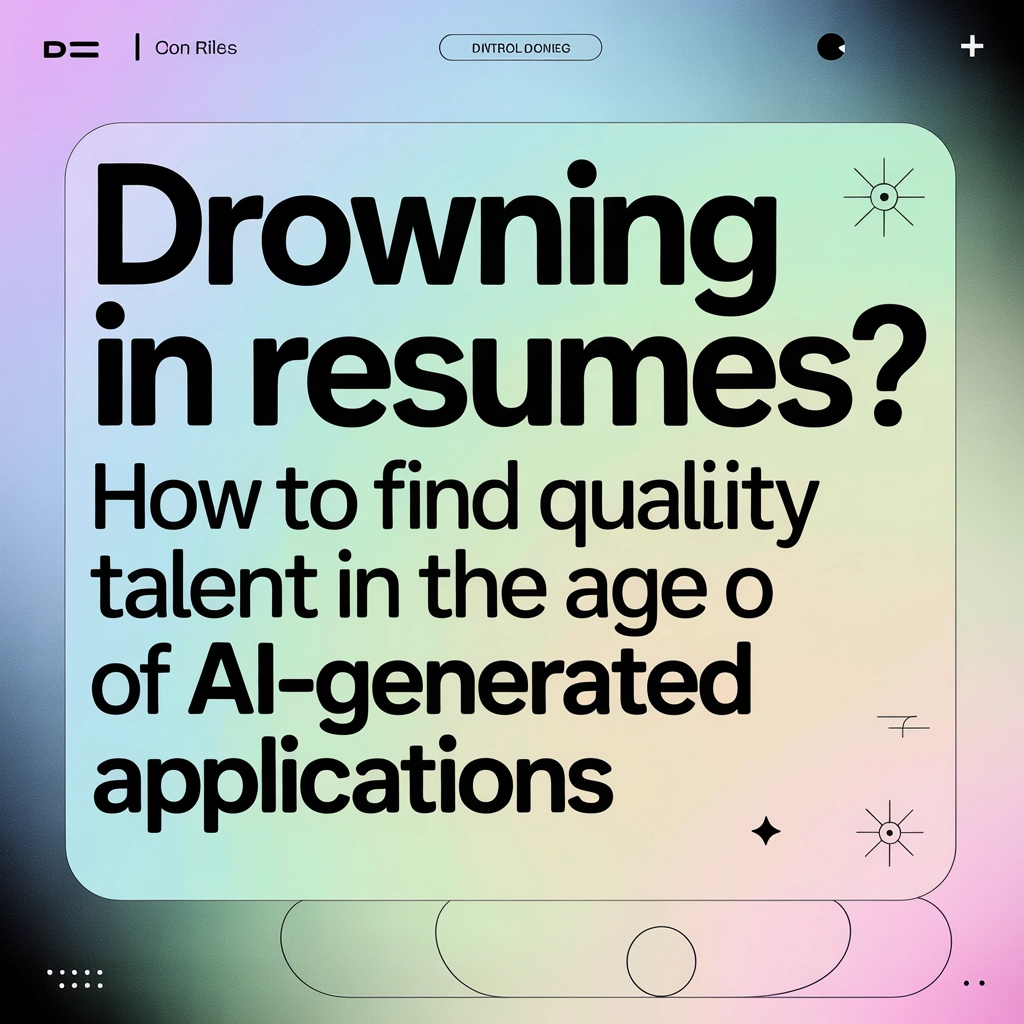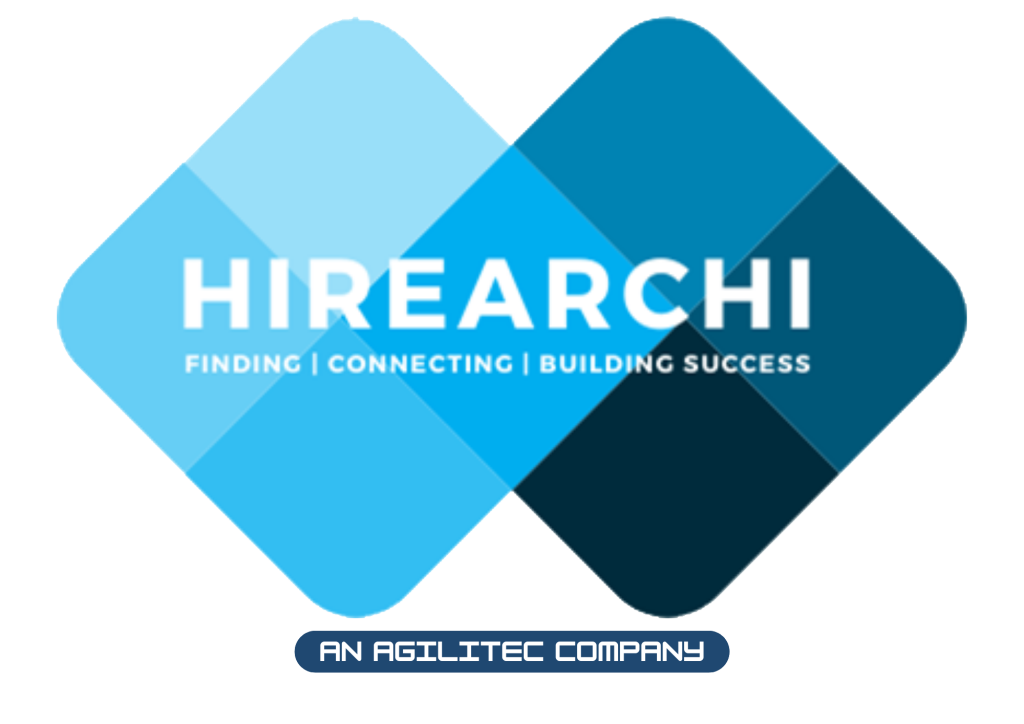
The modern hiring landscape looks pretty different from just a few years ago. If you’re involved in recruiting today, you’ve likely noticed a flood of application emails for every open role—most of them perfectly formatted and tailored to each job ad. But here’s the catch: many of these resumes aren’t written by the candidates themselves. Instead, they’re mass-produced, polished, and customized by AI-powered tools.
Welcome to the age of the AI-generated application, where finding real, quality talent is about as easy as finding a needle in a data haystack.
The Scale of the Problem
AI job-hunting tools make it incredibly easy for candidates to create dozens of application-ready resumes in seconds. For hiring teams, the impact is immediate: what used to be a manageable pile of applications is now an overwhelming avalanche. And while on the surface these applications may seem individually tailored, they often lack genuine relevance, insight, or personality.
The costs aren’t just about overwhelm. Your hiring team is now spending extra hours-the workday equivalent of sifting sand—trying to spot actual qualifications beneath a layer of generic, AI-enhanced buzzwords. This pulls focus from your core business and drags out your hiring pipeline, especially in fast-moving industries or early-stage scale-ups where every hire counts.

Strategic Solutions for Quality Talent Identification
Thankfully, forward-thinking recruitment teams aren’t powerless. The same AI tools powering the flood can also be your first line of defense. Here’s how:
AI-Powered Screening Systems
Modern recruitment platforms use advanced algorithms to score every application. These candidate scoring systems look beyond formatting and keywords. They assess how a resume or cover letter aligns with your must-have criteria, even accounting for soft skills based on the candidate’s written answers.
By assigning numerical rankings, AI tools surface the most relevant candidates automatically, making it far more manageable to sort your “possibles” from your “no-thanks.” This not only saves time but helps ensure your shortlist truly aligns with your company’s needs.
Comprehensive Data Integration
It’s not enough to sort resumes—you need the big picture. The best AI recruitment tools combine detailed resume data with insights from chatbot pre-screens or automated Q&A, giving you a rich profile of each candidate. This way, you’re not just relying on self-promotion skills, but actual responses to tailored role-specific questions.
Threshold-Based Filtering
Worried you’ll miss a great person who just doesn’t interview well on paper? By using dynamic thresholds—minimum scores on both resume data and screening questions—you can make sure only the best-fit candidates advance in your process. These systems continually learn and adapt as you provide feedback, reducing bias and fine-tuning your results.
Practical Implementation Strategies
All that tech is only powerful if you use it wisely. Here’s how to make it work in your process:
Multi-Stage Screening: Automation Meets Interaction
Combine AI-powered resume reviewing with interactive chatbot or video assessments. First, let AI sift out obviously unqualified applicants. Next, employ automated Q&A sessions or skill tests. By adding these steps, you create more hurdles that generic applications can’t easily leap—leaving only candidates who genuinely match your requirements.
Prioritize Practical Skills Over Fluff
Focus on practical skills assessments—either in the form of sample projects, situational questions, or tests that are hard to answer with just a polished resume. For example, if you’re hiring a remote tech lead, ask candidates to solve a real-world scenario rather than just describe their skills in abstract terms. This step helps reveal actual expertise and drive.

Keep the Human Touch
AI is a powerful filter, but it isn’t a substitute for human judgment. Once your shortlist is built, take the time for nuanced review. Look for motivation, cultural fit, and those intangible qualities that make a hire a long-term asset.
Best Practices for Spotting True Talent
Don’t just tweak your tech—adjust your entire mindset about hiring. Here are some pro tips:
Be Skeptical of Too-Perfect Resumes
If a resume seems “too good”—every keyword checked, every phrase straight from your job ad—it might very well be AI-generated. Look for evidence of real passion: achievements, personal anecdotes, or in-depth explanations that are tough to fake.
Use Progressive, Layered Filtering
Start wide, but funnel applications quickly. Use automated ranking first, then get your hands dirty with a more focused review. Consider building stages into your process (resume, screening questions, skills test, then live interviews) so only serious, qualified candidates make it through each round.
Analyze and Adjust
The world of hiring is moving rapidly, and so should you. Track the quality of hires from each stage in your process, and constantly refine your criteria. Many AI screening tools can use your team’s feedback to improve their performance over time.
The Balance Between Tech and Human Insight
It’s tempting to rely solely on automation to cut down hiring noise, but the best results come from combining AI efficiency with your own experience and intuition. Technology helps you handle volume; your team ensures you don’t miss out on great talent who might not be resume-optimization experts.
If you’re aiming to refine your talent pipeline even further, check out our guide to remote hiring best practices or explore how we match companies to top-tier remote talent at HireArchi.

With the right blend of tools and human insight, you can confidently navigate the sea of AI-generated resumes, keeping your hiring processes efficient and—most importantly—focused on candidates with real, proven talent.

